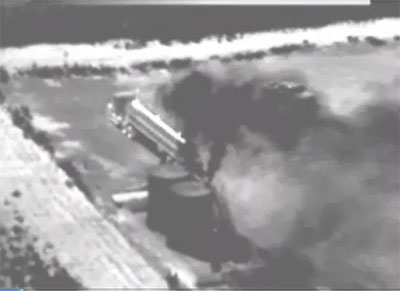October 23rd marks one yearsince “methane pollution” entered the national lexicon. For years, methane, a pollutant 87 times more powerful than carbon dioxide over a 20 year span, quietly threatened our our climate, without much of the world knowing it existed, let alone what it was or where it came from. That all changed on October 23, 2015 when Southern California Gas Company told the world that methane was billowing from its gas storage facility in Porter Ranch, California.
From when it was announced on October 23, 2015, methane, the primary component of gas, cascaded down from SoCalGas’ massive storage facility above the Porter Ranch community, causing thousands of people and families to become ill, and eventually forcing them out of their homes for months. SoCalGas failed to cap the gas leak until February 18, 2016, but at that point, nearly 100,000 tonnes of methane had been released, making this the worst gas leak in American history.
While the Aliso Canyon disaster received a tremendous amount of coverage -- and rightfully so -- it’s far from being the only gas disaster to have struck our communities. For the past eight years, Eight Mile, Alabama has suffered from a methane leak, with thousands continuing to suffer from the impacts. Unfortunately, the threat of methane will only continue to grow as corporate polluters seek to expand the extraction and use of gas throughout the country.
Earlier this year, the Obama administration took the common-sense step of finalizing the first ever standards for methane pollution. The rule covers new and modified sources of methane pollution from oil and gas facilities and operations, however, existing sources of methane pollution are left unregulated. Thankfully, the administration has listened to our calls for standards covering existing oil and gas facilities, and took the first steps towards completing those regulations earlier this year.
Yet while those first steps are important, the rule covering existing sources of methane pollution are not yet complete -- and we need to ensure they are finalized and implemented as quickly as possible. We know that even by 2018, 90% of methane emissions from the oil and gas sector will come from facilities that were in operation in 2011, and are therefore not covered by the new and modified source rule.
Standards safeguarding communities from all oil and gas operations are not only needed for the health and security of our communities, but to meet America’s global climate commitments. As a part of his Climate Action Plan, President Obama has committed to cutting methane pollution by 40 to 45 percent from 2012 levels by 2025. This ambitious goal is critical to meeting our Paris commitments and staving off the worst effects of climate change, but is only achievable with a strong federal methane pollution standard for all oil and gas sources.
Ever since SoCalGas publicly acknowledged its methane leak, America has come to recognize the ever growing threat it poses to our climate and therefore our public health. The new source methane rule proposed earlier this year was a fantastic start and we desperately need the rule for existing oil and gas sources to be fished quickly as well, but, ultimately, the only way we can protect our health, our communities, and our climate is by completing our transition to 100 percent clean, renewable energy and leaving dirty fuels like gas in the ground.
